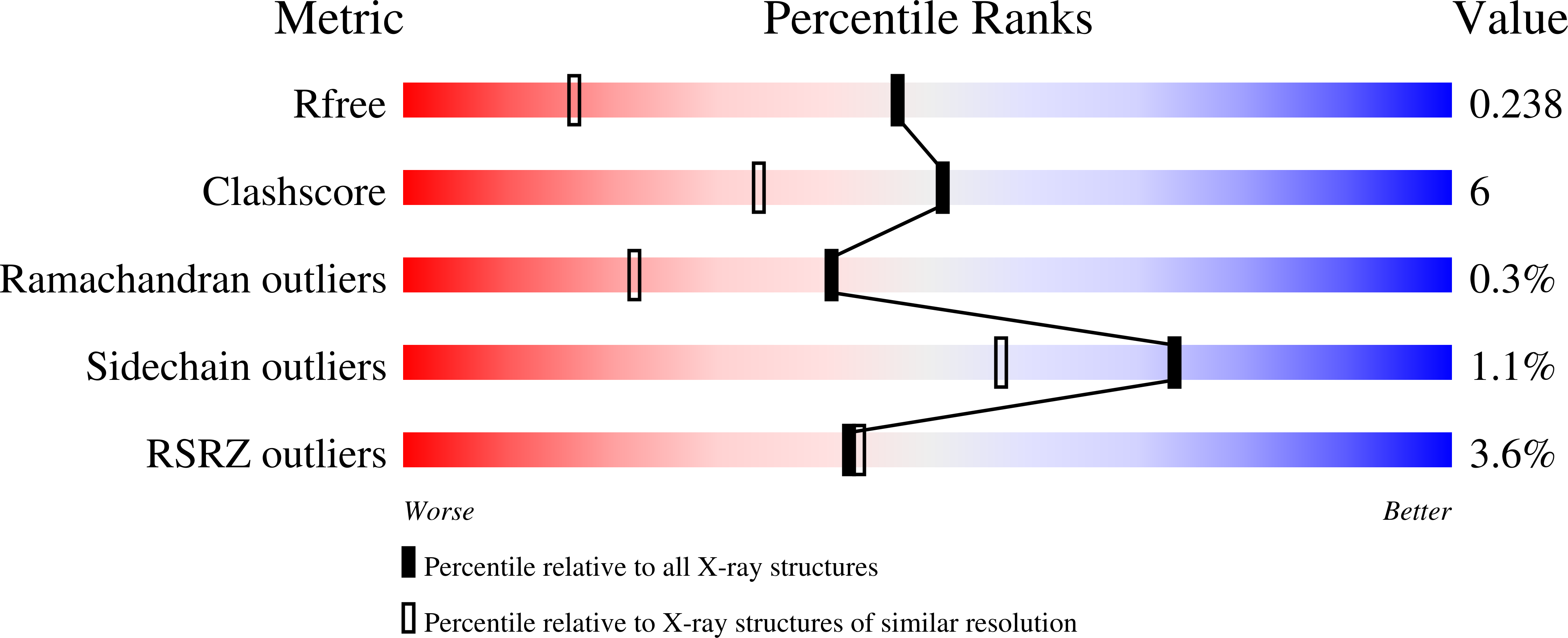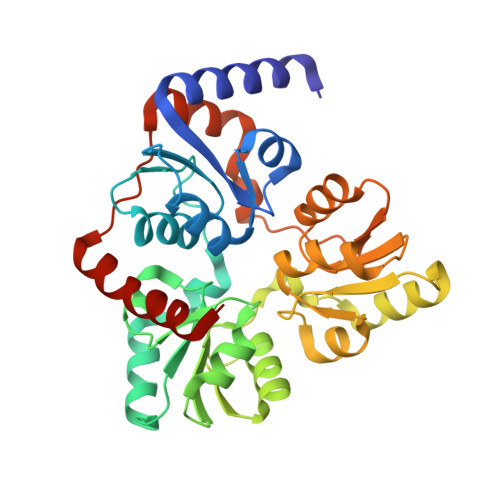The crystal structure of Fe4S4 quinolinate synthase unravels an enzymatic dehydration mechanism that uses tyrosine and a hydrolase-type triad.
Cherrier, M.V., Chan, A., Darnault, C., Reichmann, D., Amara, P., Ollagnier de Choudens, S., Fontecilla-Camps, J.C.(2014) J Am Chem Soc 136: 5253-5256
- PubMed: 24650327
- DOI: https://doi.org/10.1021/ja501431b
- Primary Citation of Related Structures:
4P3X - PubMed Abstract:
Quinolinate synthase (NadA) is a Fe4S4 cluster-containing dehydrating enzyme involved in the synthesis of quinolinic acid (QA), the universal precursor of the essential nicotinamide adenine dinucleotide (NAD) coenzyme. A previously determined apo NadA crystal structure revealed the binding of one substrate analog, providing partial mechanistic information. Here, we report on the holo X-ray structure of NadA. The presence of the Fe4S4 cluster generates an internal tunnel and a cavity in which we have docked the last precursor to be dehydrated to form QA. We find that the only suitably placed residue to initiate this process is the conserved Tyr21. Furthermore, Tyr21 is close to a conserved Thr-His-Glu triad reminiscent of those found in proteases and other hydrolases. Our mutagenesis data show that all of these residues are essential for activity and strongly suggest that Tyr21 deprotonation, to form the reactive nucleophilic phenoxide anion, is mediated by the triad. NadA displays a dehydration mechanism significantly different from the one found in archetypical dehydratases such as aconitase, which use a serine residue deprotonated by an oxyanion hole. The X-ray structure of NadA will help us unveil its catalytic mechanism, the last step in the understanding of NAD biosynthesis.
Organizational Affiliation:
Metalloproteins Unit, Institut de Biologie Structurale, Commissariat à l'Energie Atomique-Centre National de la Recherche Scientifique, Université Grenoble-Alpes , 6 rue Jules Horowitz, 38000 Grenoble, France.

















